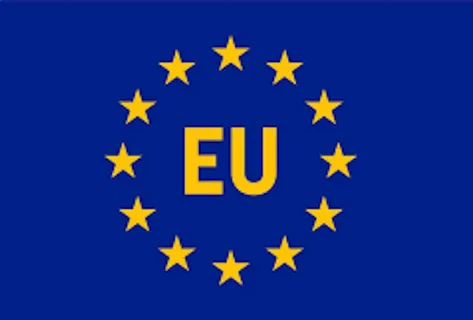From October 12, 2025, Europe is saying goodbye to those familiar passport stamps. In their place comes something faster, smarter, and far more digital, the EU Entry/Exit System (EES).
This new system will completely change how non-EU travellers enter and leave Schengen countries like France, Germany, Spain, Italy, and the Netherlands. Instead of manual checks and stamps, the process will now rely on biometric data, your fingerprints and facial image stored in a secure EU database.
It’s one of the biggest border control overhauls in Europe’s history, and for travellers, it means one thing: the way you move through European airports is about to change.
So what exactly is this new system, why is it being introduced, and how will it affect your next trip to Europe? Let’s unpack everything you need to know.

What is the Entry/Exit System
The Entry/Exit System (EES) is the European Union’s new automated border tracking system designed to replace the old passport-stamping method for non-EU nationals.
Here’s how it works: whenever you enter or exit any of the 26 Schengen countries, the system will automatically record your:
- Name and travel document details
- Facial image and fingerprints
- Date, time, and place of entry or exit
That information will be stored digitally for up to three years, helping EU authorities know exactly how long you’ve stayed and whether you overstayed your visa.
This digital record replaces the small ink stamp you used to get at the airport. The goal? To make Europe’s borders faster, smarter, and more secure.
Who It Applies To And Who It Doesn’t
The EES is only for non-EU citizens, meaning it applies to anyone who isn’t from the EU or Schengen Area.
That includes two main groups:
- Visa-Exempt Travellers — Citizens of countries like the UK, Canada, or the US, who don’t need a visa for short stays in Europe.
- Visa Holders — Travellers from countries like Nigeria who need a Schengen visa to enter Europe.
If you’re Nigerian and already submitted biometric data (fingerprints and photos) during your visa application, you’ll still go through the EES check at the border, where your data is matched and your entry recorded digitally.
Even if you’ve been to Europe before, you’ll need to complete EES registration the first time you enter after the system goes live.
How the Rollout Will Work Across Europe
Europe plans to roll out the EES across airports, seaports, and land borders on October 12. But don’t expect everything to switch over overnight, the process will unfold gradually.
At airports, self-service kiosks and automated gates will become the new norm. When you arrive:
- You’ll scan your passport at a kiosk.
- The system will take your fingerprints and facial photo.
- Your entry will be digitally logged — no more passport stamp.
Border officers will still be present, but the process will mostly be self-operated, similar to what already happens in some UK or US airports.
At land borders like between France and Switzerland or Germany and Poland, EES registration booths are being set up. Authorities have warned there might be longer queues at first as people get used to the system.
Seaports, especially for ferries and cruises, will also adopt EES biometric checks.
Bottom line: the EES will gradually become the new normal for everyone entering or leaving the Schengen Zone.
Why Europe Is Doing This
For decades, Europe relied on manual passport stamps to track visitors. The problem? It was slow, inconsistent, and easy to miss overstayers or fake documents.
The EES is designed to fix all of that. Its main goals include:
- Tightening border security using verified biometric data.
- Automatically detecting overstays or expired visas.
- Making border crossings faster for frequent travellers once registered.
- Creating a shared EU database accessible by all Schengen countries for better coordination.
The idea is to move from an outdated paper process to a digital system that’s harder to cheat and easier to manage. It’s also the first step toward Europe’s bigger plan for a “Smart Borders” future — where data replaces stamps, and biometric ID replaces paperwork.
EES and ETIAS: How They Work Together
If you’ve heard of ETIAS, the European Travel Information and Authorisation System, it’s another new system set to launch in mid-2026. It’s often mentioned alongside EES because they’re connected.
Here’s the difference:
- ETIAS is for pre-travel authorisation. It checks and approves travellers before they board a flight to Europe (like the U.S. ESTA system).
- EES records the actual entry and exit at the border using biometrics.
In short:
- You’ll apply online through ETIAS (if you’re visa-exempt).
- Then, EES records your movement once you arrive or depart.
Together, they form a complete digital control system for who enters Europe, when, and for how long.
What Travellers Should Expect at the Airport
When EES launches, the travel experience at European airports will look a little different. Here’s what you can expect:
- Longer Queues at First – Especially during the first few months as border staff and travellers get used to the new system.
- Self-Service Kiosks – You’ll scan your passport, have your fingerprints taken, and face captured for verification.
- No More Passport Stamps – Your entry and exit will be recorded digitally, and your allowed stay automatically calculated.
- Faster Process for Repeat Travellers – Once your data is in the system, future trips will be much quicker.
Officials recommend arriving earlier than usual at airports, at least three hours before departure during the early months of rollout.
What You Should Do to Prepare
If you’re planning to travel to Europe after October 12, 2025, here’s how to make your trip smoother:
- Check your passport validity. Make sure it’s not expired or damaged, biometric systems reject poor-quality documents.
- Keep your visa details clear. Don’t overstay your Schengen visa period. The EES will automatically calculate your stay.
- Arrive early at airports. The new checks may cause delays initially.
- Be ready for biometric capture. Your fingerprints and facial image will be taken at the border — a one-time process for future ease.
- Track your travel days. If you’re a frequent visitor, remember that the EES enforces the 90/180-day rule strictly — 90 days within any 180-day period in the Schengen Area.
For Nigerian travellers especially, staying within the rules matters more than ever, overstaying your visa will now trigger automatic alerts and penalties across all EU countries.
How It Affects Visa Applicants
For those applying for Schengen visas from Nigeria, the new system means greater transparency.
When you apply for a future visa, consulates will be able to:
- Check your previous travel records through the EES database.
- Verify if you overstayed or left on time.
- Cross-check your past biometric data.
That means travellers with a clean record, those who always leave before their visa expires — may find it easier to get approved in the future.
The flip side? Anyone who overstays, even by a few days, could face tougher scrutiny or rejection next time.
The Pros and Cons of the New System
Like any major change, the EES comes with both benefits and challenges.
The Upside
- Faster border checks for returning travellers once registered.
- More accuracy — no more errors from missing passport stamps.
- Improved security against identity fraud or illegal entry.
- Transparency — travellers can clearly see their stay history.
The Downside
- Potential delays during the first months of implementation.
- Privacy concerns about storing biometric data.
- Technical glitches that could cause slowdowns or duplicate records.
Still, EU authorities insist that all personal data will be protected under the General Data Protection Regulation (GDPR), one of the world’s strictest privacy laws.
The Entry/Exit System marks the official end of Europe’s paper-stamp era. Those little black stamps that once filled your passport pages are being replaced by clean digital records in a secure European database.
It’s a major leap toward the EU’s vision of “smart borders”, where technology, not manual stamping, governs how people move in and out of the continent.
For travellers, this means two things:
- More convenience in the long run.
- But stricter enforcement of travel rules.
Europe is making it clear you can still come, explore, and enjoy, but the days of slipping past visa limits or manual errors are over. The system now knows exactly when you entered and when you left.
The EES isn’t happening in isolation. Around the world, countries are shifting to biometric border systems from the United States and Canada to the UAE and the UK.
The trend is clear: borders are going digital, and travellers are becoming data profiles rather than just passport numbers.
For Africa, it also signals that travel compliance will matter more than ever. Your history, your timing, and your respect for visa limits will all shape how easily you move globally.
Europe’s EES rollout is a glimpse of what’s ahead, a world where technology, not paper, defines your travel story.
Whether you’re heading to Europe for school, business, or vacation, this change is something you can’t ignore. From October 12, 2025, the Entry/Exit System will quietly but permanently reshape how non-EU citizens travel across Europe.


